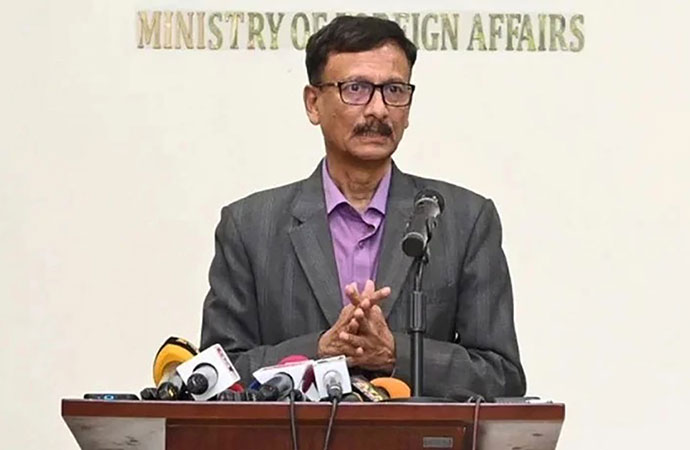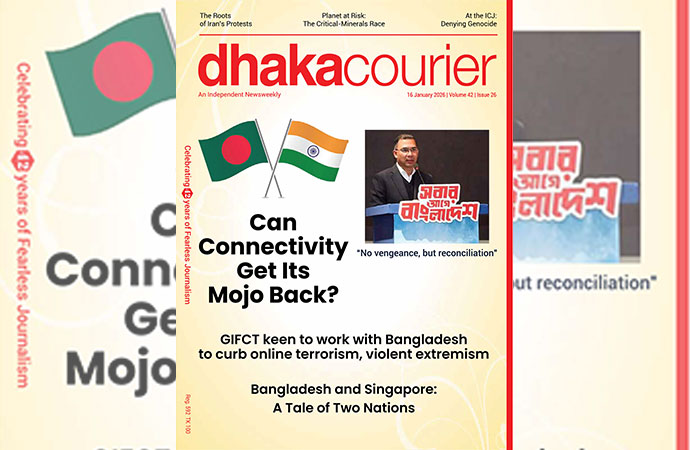Society

Image: Collected
Although jackfruit is the national fruit of Bangladesh, mango, the queen of fruits, is several times ahead in terms of production, trade, and consumer demand. According to the Department of Horticultural Research, ten countries produce 21 varieties of mangoes on a commercial basis. Among the 21 varieties, half of these are improved varieties of mango. However, there are hundreds of varieties of mangoes that grow in Bangladesh, and over 270 varieties grow in Rajshahi alone. The mango season lasts for a total of 5 months, from May to September, but most mangoes are available from June to July. Here we have listed the most renowned mango varieties in Bangladesh.
The mango season in Bangladesh can be divided into three parts, early varieties, mid-season varieties, and Nabi varieties. Early varieties of mangoes ripen from the second week of May to mid-June, and among these notable varieties are, Gopalbhog, Govindobhog, Brindabani, Gulabkhash, Ranipchanda, Himsagar, Kshirshapat, and BARI-1. Starting from mid-June, the mid-season mangoes start to ripen, Langra, Haribhanga, Lakkhanbhog, Khudikhirsha, BARI-2, Bombay, Surjopuri, etc. are among them. Nabi variety ripens from July to the first week of September. They are Fazli, Amrapali, Mohanbhog, Ashwina, Gaurmati, BARI-3, BARI-4, etc.
Gopalbhog
Among all the early varieties, Gopalbhog comes first in the market. Cultivated in Rajshahi, Natore, and Chapainawabganj, Gopalbhog mango is medium in size; ripe mango is yellowish-green in color, the peel is not completely yellow when ripe, kernels are thin, no scales, and sweet.
Gopalbhog is medium tall and mostly round, with a medium chest in the middle, the shoulder is high, the average length is 6.8 cm, the weight of the fruit is 208.0 to 500 grams, 2 to 4 mangoes and mango weighs 1 kg. In the initial season, the price for Gopalbhog mango is Tk. 120- Tk. 140 per Kg. However, upon the availability of other varieties, it may be reduced to less than Tk. 100 per Kg.
Himsagar
After Gopalbhog, Himsagar mangoes start ripening from the first week of June and are available in the market throughout the month of June. A full-sized Himsagar is shaped in the round on the chest and concave or slightly oblong from the sinuses, and the apex is round. The color of ripe Himsagar mango is light green and remains green even after ripening. The skin is smooth and thin. This variety of mango has no lips.
It is a very fragrant mango with excellent taste. Besides, the shell is soft and fibrous, and orange. Ripe mangoes can be kept indoors for up to eight days after collection. The average weight of the fruit is 219 grams, and the length is up to 6.89 cm. This variety is widely cultivated in Damurhuda Upazila of Chuadanga district, Sadar Upazila of Meherpur district, Sadar, Debhata, Kalaroa, and Tala Upazilas of Satkhira district. Usually, Himsagar is priced at Tk. 80 to Tk. 120 per Kg.
Langra
There are no people in Bangladesh who do not like Langra mango. It looks a bit round and smooth. Its nose can be seen at the bottom, and its skin is very thin. It comes on the market in mid-June. Weighing 200-600 grams each mango, Langra is known as the king of mangoes. It is extraordinary in color with this shell, incomparably sweet taste and smell.
The kernels are thin and non-fibrous. Langra mango is grown in almost all the districts of Bangladesh. However, it is found more in Chapai, Rajshahi, Naogaon, and Natore areas. Depending on the production and season, the average price for Langra mango is Tk. 70- Tk. 100 per Kg.
Harivanga
The only fibreless mango in Bangladesh is Haribhanga Mango from Rangpur. It is thick on top and thinner at the bottom. Its kernel is round, small, and a little long. Besides, it has a shapely body and a fleshy appearance. It is a fibreless mango. A piece of Harivanga weighs more than other mangoes. Usually, an average of three mangoes weighs one Kg.
Sometimes each mango weighs 500-600 grams. However, the good thing about this variety is that the ripe mangoes remain intact for a long time. The skin can be seen wrinkled but stays good inside. This mango can be eaten raw or ripe, which is sold at Tk. 40 to Tk. 60 per Kg.
Fazli
Fazli is one of the popular mangoes in Bangladesh. It is large in size and weighs 400 to 1000 grams. Fazli is long in shape and somewhat flat. When ripe, the skin changes color from green to slightly yellow. The shell is yellow, unpretentious, very juicy and fragrant, delicious and sweet. It has a thin peel.
In our country, the Chapainawabganj district is at the forefront of Fazli mango production. However, high-quality Fazli mangoes are widely cultivated in Bagha and Charghat areas. Chapai's Fazli is large in size. Although the Bagha's Fazli is smaller in size and it is incomparable in taste. Typically, Fazli mango costs around Tk. 60 to Tk.100 per Kg in the regular season.
Amrapali
Amrapali is a Nabi variety of mango. It is considered a hybrid variety as it was produced from two other varieties of mangoes. It was a hybrid production from Lakhnow's Dushehiri and Neelam mangoes. The fruit is elongated, and the lower part is very curved.
The skin color of Amrapali is green and slightly yellow when ripe. The skin is smooth and thin. The color of the peel is orange, very juicy, delicious, and fragrant, and does not have any fiber. The price for Amrapali stays between Tk. 70 to Tk. 90. per Kg.
Bottom Line
Ripe mangoes are already available in the market. Everyone likes delicious and sweet juicy mangoes. However, buyers get confused in the market after observing so many varieties. Therefore, if you have the right idea about which mangoes are available in which season, it would be easier for you to understand the type of mango you are buying. Besides, you can have an idea of prices too. Mangoes as fruit are very disciplined. When the mango is supposed to ripen, it is not available except a week before or after it.

























Leave a Comment
Recent Posts
Remembering Kalidas Karmakar ( ...
The art world remembers Kalidas Karmakar, a visionary whose creativity ...
An Evening with Shishir Bhatta ...
Cosmos Art Echo, the artist talk initiative of Gallery Cosmos and Cosm ...
Myanmar denies genocide, calls Rohingya crackdown co ..
Yes, of course
Earth’s average temperature last year hovered among ..
Bangladesh and Singapore: A Tale of Two Nations